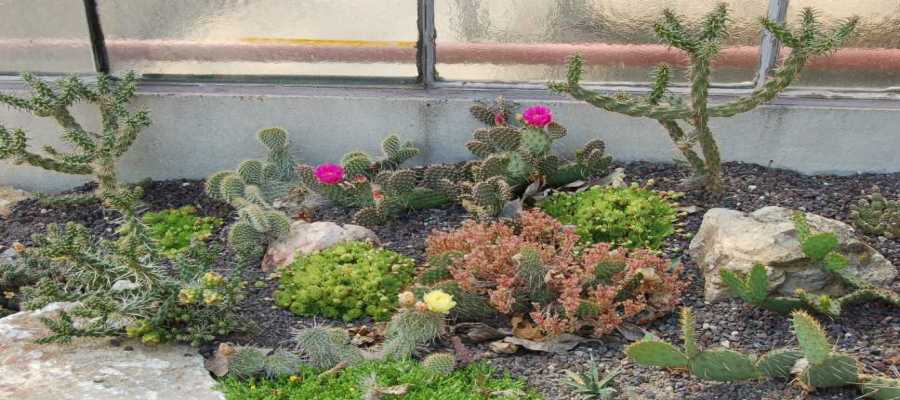Infidel astonishment is triggered by snow-covered succulents in the garden of some observers. But the outdoor culture of cacti is possible even in our latitudes.

Winter hardy cacti come mainly from the high altitudes in New Mexico, Arizona and California to southern Canada, the highlands of the Andes in South America to Tierra del Fuego. In the European Alps Sempervivum (Dachwurz) and Sedum (stonecrop) are at home and in the Himalayas, for example, Orostachys species. Well over 100 species are suitable and many more hybrids that show the most beautiful colors and shapes, especially in Sempervivum and Opuntia species and are perfectly adapted to our living conditions.
Location
Basic requirement is plenty of light and direct sun for at least a few hours a day. Ideal are the places in the garden, which represent problem areas for other plants due to drought and heat: the bed under the roof overhang of a south exposed house wall, the dry stone wall or the south inclined planting bed. The rock garden is ideal for "winter hardy" as well as troughs, bowls, balcony boxes or the unheated conservatory. If you are planting vessels, they must of course also be frost-resistant.
Planing of a planting bed
If the soil does not by itself provide optimum conditions, these can be made.
How to design?
The largest need of space link cacti: Cylindropuntia grow in height and all Opuntia species with disc-shaped junior limbs grow bushy. They should all be planted at least 30 - 40 cm apart.
Ball cacti like Echinocereus and Escobaria grow slowly and stay relatively smaller, 20cm minimum distance is enough for them.
As subplantation are suitable Delosperma, Orostachys, Sedum and Sempervivum, they remain just like Opuntia fragilis and their forms and varieties low and spread in the area. They form an interesting contrast in color and form. However, as they have a great urge to spread, one avoids the immediate proximity to slowly growing plants and small species.
Water hardy plants
During the main growth from April to July, enough moisture should be available to the plants for good growth through natural rainfall. Everywhere where there is no rain must be poured when growth is desired. When dry, the plants do not suffer any damage, but they do not grow. This is especially true for buckets and troughs that dry out more and all areas under roof or rain shadow. Especially in autumn you should make sure that there is enough moisture for Opuntia, Sedum, Delosperma and Sempervivum so that the roots do not dry out extremely.
Nutrient supply particularly important
The winter hardiness is directly dependent on the right nutrient supply. Undernourished plants can not store so many reserve substances in the cells, which reduces their frost tolerance. In addition, poorly supplied plants are weaker and more susceptible to disease.
From the end of March to the end of September, fertilize once a month with fertilized water, smaller areas with Uhlig Succulent / Supplementary Fertilizer , large areas with Wuxal Super .
Diseases and pests
There are very few diseases and pests that occur on hardy plants. Snails are by far the most common plague. They can be well treated with conventional methods. The natural Ferramol slug pellets have proved their worth.
Fungal diseases rarely develop black or red spots, which are usually caused by too much moisture. Unsightly sprouts should be removed and the plants should be sprayed with copper-containing agents such as Atempo Copper-Fungus-Free.
> our selection of winter hardy plants